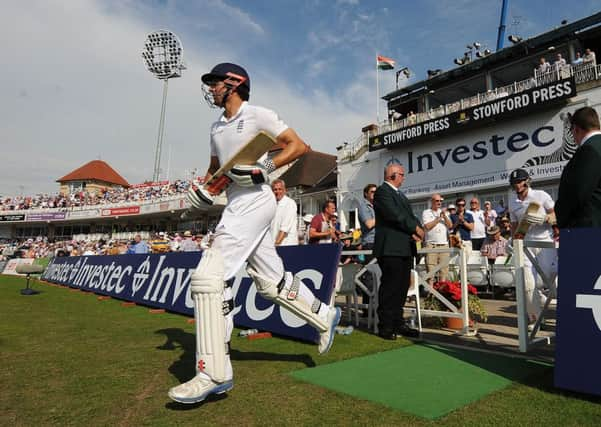Chris Waters: Paying cricket supporters deserve pitch perfect conditions


No one who has watched the first Test match between England and India would be inclined to disagree as bat has dominated on a sluggish surface by the banks of the Trent.
Cardus was referring not to the state of the pitch, however, but the prolific nature of the Nottinghamshire batting in the mid-1920s. This week, Trent Bridge has been “a lotus land” for altogether different reasons – namely, the featherbed nature of the Nottingham surface. Inevitably, the cry has gone up that Nottinghamshire have produced “a chief executive’s pitch”.
Advertisement
Hide AdAdvertisement
Hide AdThis claim has been strenuously denied by none other than Nottinghamshire chief executive Lisa Pursehouse.
“The idea that as a chief executive I would put pressure on to produce any sort of pitch is a bit silly actually,” she said. “At Trent Bridge, all we want is good cricket pitches.”
Unfortunately, this has not been a good cricket pitch.
No matter what happens from here, no matter how thrilling or otherwise the climax to the game, it has been a dreadful surface for a five-day match.
As England struggled on the opening day, when India scored 259-4 in conditions more evocative of Nagpur than Nottingham, some balls were bouncing twice before they reached the wicketkeeper.
Advertisement
Hide AdAdvertisement
Hide AdIt was a demoralising sight for such as Yorkshire pace bowler Liam Plunkett, not to mention those spectators who had paid to be entertained.
Frankly, I have no idea whether there is such a thing as “a chief executive’s pitch”, and I see no reason to dispute Nottinghamshire head groundsman Steve Birks’s admission that he might have left “a bit more grass on it”, which was tantamount to an apology.
Clearly, there is great financial pressure on the counties – not least a Yorkshire club some £24m in debt – and five days of cricket theoretically results in more ticket sales and spin-off money.
But as long as there is a crazy system in operation in which counties have to pay vast sums to the England and Wales Cricket Board to stage Tests, you can hardly blame them if they want to put the bottom line first.
Advertisement
Hide AdAdvertisement
Hide AdThis will only change if the ECB introduces a rotation policy for staging Tests, although I would personally like to see a return to the traditional six Test match grounds instead of nine.
They say improved drainage systems have dried out squares across the land, and there is evidence of that in the county game.
Some of the pitches produced for the NatWest T20 Blast, for example, have hardly encouraged exciting cricket, and it is clearly a problem that needs to be addressed.
I do not believe in rigging pitches for home advantage, which England tried to do last year by producing dry surfaces to suit the spin of Graeme Swann, but I do believe in putting spectators first.
Advertisement
Hide AdAdvertisement
Hide AdThe top priority should not be trying to doctor pitches to suit home conditions, or making them last the full five days, but recognising that the cricket must be interesting and entertaining enough to compel the man on the street to keep coming back for more – otherwise, there is no cricket.